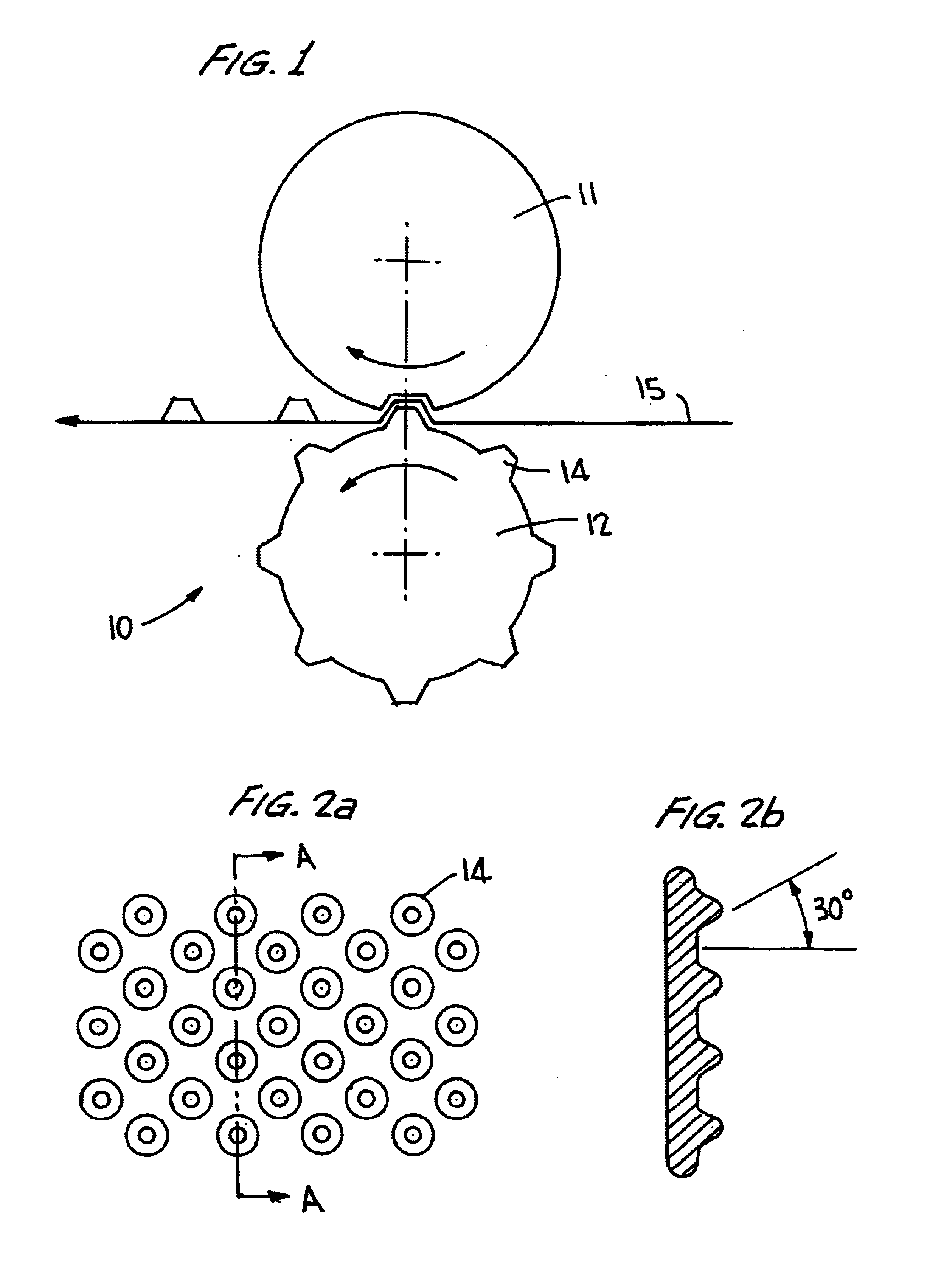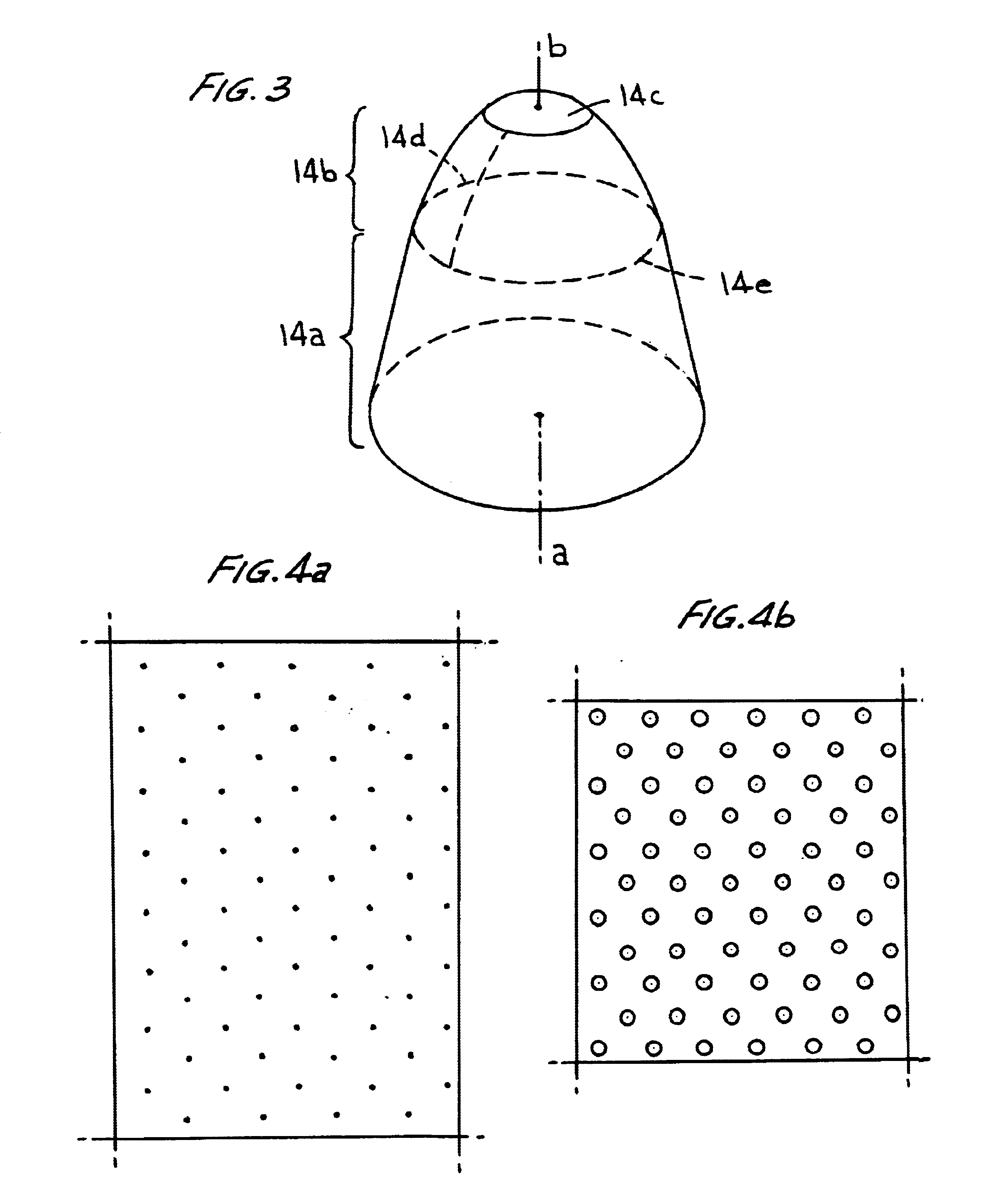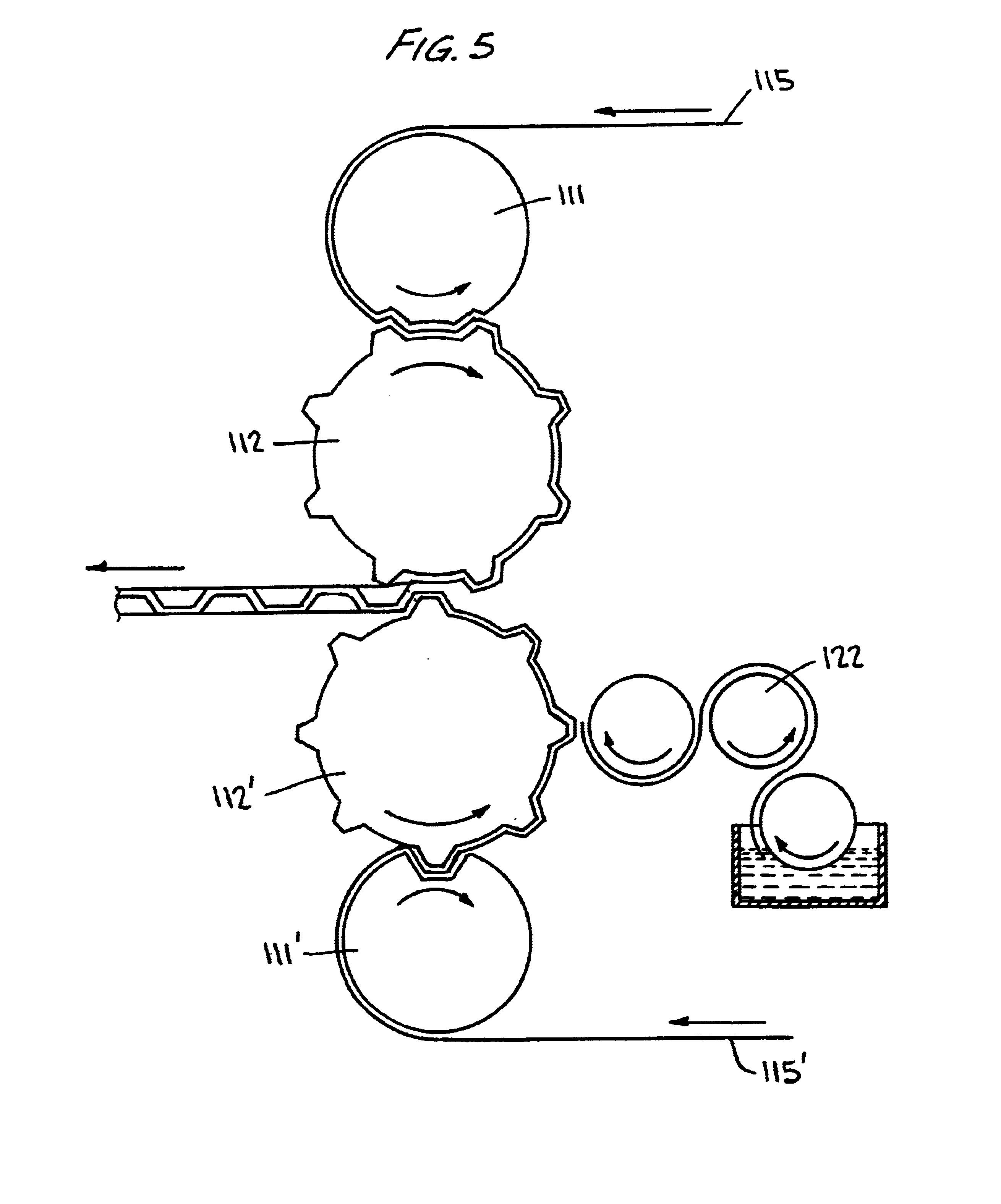Method for fabricating an embossed sheet of cellulose tissue, a product so made and an embossing cylinder
a technology of cellulose tissue and embossing cylinder, which is applied in the field of sanitary or household papers, can solve the problems of reducing the tear strength of embossing, destroying part of the link between paper fibers, etc., and achieve the effect of improving the thickness of embossing and reducing the tear strength
- Summary
- Abstract
- Description
- Claims
- Application Information
AI Technical Summary
Benefits of technology
Problems solved by technology
Method used
Image
Examples
Embodiment Construction
[0029]FIG. 1 schematically shows an embossing assembly 10 for a sheet 15. A first cylinder 12 is made of steel or other rigid material and includes at its surface embossing elements 14 shown exaggeratedly large in this Figure. A cylinder 11 consisting of rubber or any material deforming under pressure is mounted parallel to the first cylinder 12 and rotates fairly tightly with it. A sheet of cellulose tissue paper which is to be embossed is engaged between the two cylinders. The sheet 15 may be a single ply or two or more superposed plies. Each of the plies consists of creped cellulose tissue paper exhibiting a specific surface weight between 15 and 35 g / m2. The creping ratio is appropriate to allow embossing. In between the two cylinders, the sheet is deformed by the embossing elements of which it assumes the shapes.
[0030]As regards FIGS. 2 and 3, they show an illustrative embodiment of the embossing elements of the invention. FIGS. 2a and 2b show embossing elements 14 at the cylin...
PUM
| Property | Measurement | Unit |
|---|---|---|
| half-angle | aaaaa | aaaaa |
| half-angle | aaaaa | aaaaa |
| height | aaaaa | aaaaa |
Abstract
Description
Claims
Application Information
 Login to View More
Login to View More - R&D
- Intellectual Property
- Life Sciences
- Materials
- Tech Scout
- Unparalleled Data Quality
- Higher Quality Content
- 60% Fewer Hallucinations
Browse by: Latest US Patents, China's latest patents, Technical Efficacy Thesaurus, Application Domain, Technology Topic, Popular Technical Reports.
© 2025 PatSnap. All rights reserved.Legal|Privacy policy|Modern Slavery Act Transparency Statement|Sitemap|About US| Contact US: help@patsnap.com



